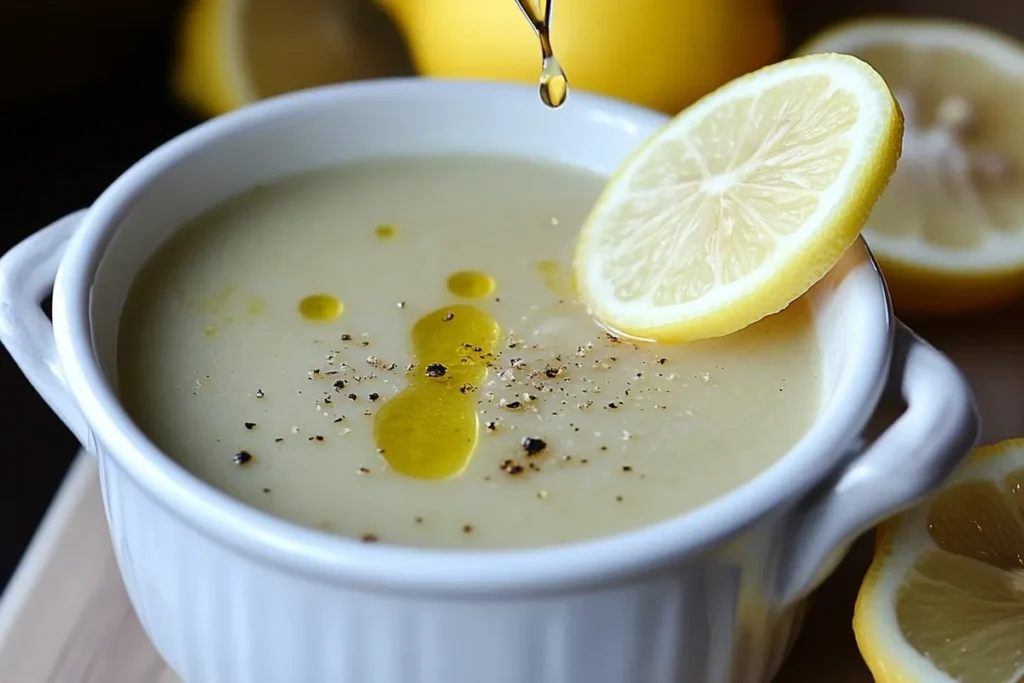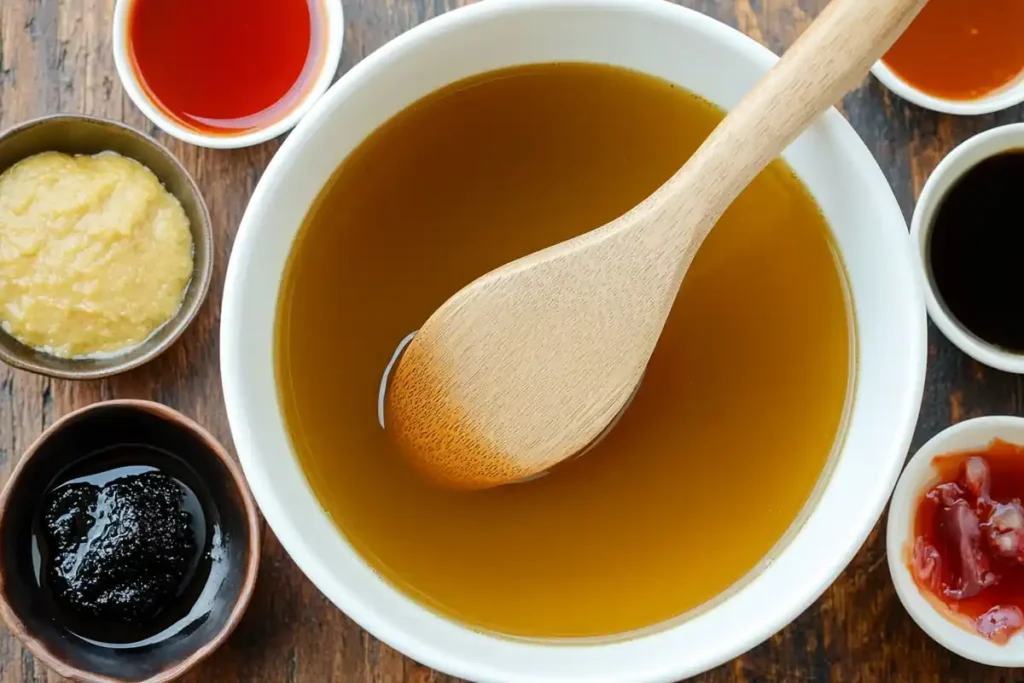A rich, flavorful soup can feel like a warm hug in a bowl, but what truly elevates an ordinary broth into something extraordinary? The answer lies in the special soup ingredient or secret ingredient that unexpected touch that transforms a basic dish into a masterpiece. While herbs, spices, and broths form the foundation of good soup, small, often overlooked elements can add layers of complexity, depth, and balance.
From umami-packed soup, magic ingredient additions like miso paste and parmesan rind to brightening agents like citrus juice and vinegar, these secret elements can make all the difference.
In this article, we’ll explore the science of taste, the traditional building blocks of a great soup, and the secret ingredients that chefs swear by. Let’s dive in!
Understanding Soup Flavor Profiles
The Science of Taste in Soups
Have you ever wondered why some soups taste incredibly rich, while others fall flat? It all comes down to the five basic tastes:
- Sweet – Naturally found in ingredients like carrots, onions, and corn, sweetness balances acidity and bitterness.
- Sour – A touch of lemon juice or vinegar can cut through richness, adding vibrancy.
- Salty – Enhances natural flavors and ties everything together.
- Bitter – Slight bitterness from leafy greens, herbs, or certain spices adds complexity.
- Umami – The most crucial for depth, umami-rich ingredients like mushrooms, soy sauce, and fermented foods provide a deep, savory taste.
Among these, umami plays a leading role in making soups taste full-bodied and satisfying. Indeed, it creates that irresistible, lingering richness that keeps you going back for more.
Traditional Ingredients for Flavor
Before we reveal the secret ingredients, let’s not forget the essentials that form the heart of any great soup:
Stocks and Broths – The Foundation of Great Soup
A well-prepared stock is the heart of any soup. Whether it’s vegetable, chicken, or beef broth, the slow extraction of flavors from bones, vegetables, and herbs creates a rich base. For a deeper taste, roasting ingredients before simmering can enhance complexity.
Herbs and Spices – The Natural Flavor Enhancers
Fresh or dried, herbs and spices build aroma and character in soups. Following are a few game-changers include:
- Bay leaves – Infuses subtle depth and warmth.
- Thyme & rosemary – Perfect for hearty, slow-cooked broths.
- Cumin & coriander – Adds warmth to spiced soups.
- Paprika & turmeric – Enhances color and imparts mild earthiness.
Aromatic ingredients like garlic, onions, and ginger also act as essential building blocks, creating layers of complexity.
Secret Ingredients Unveiled
Now that we’ve covered the fundamentals of flavor, it’s time to reveal the secret ingredients that can take your soup from ordinary to extraordinary. These unexpected yet powerful additions can enhance depth, balance, and richness in ways you never imagined.
Citrus Elements: A secret ingredient Brightening Up Soup
One of the simplest ways to bring a soup to life is with a hint of citrus. While salt enhances flavor, citrus elevates it.

Lemon Juice – A Touch of Freshness
In fact, Just a few drops of lemon juice at the end of cooking can completely transform a soup. It works exceptionally well in:
- Vegetable-based soups – Balances natural sweetness.
- Creamy soups – Prevents heaviness and adds contrast.
- Lentil and bean soups – Enhances earthiness.
Vinegar – A Subtle Yet Powerful Enhancer
A splash of vinegar, whether it’s apple cider, balsamic, or rice vinegar, enhances flavors without overpowering them. Vinegar is particularly effective in:
- Brothy soups – Adds a gentle sharpness.
- Meat-based soups – Cuts through richness.
- Miso and Asian-style soups – Complements umami.
Fermented Additions: Another hidden soup ingredient For Unlocking Deep Umami
These fermented ingredients introduce complexity, saltiness, and umami, making them secret weapons in soup-making.

Miso Paste – A Game Changer
This Japanese staple is an umami powerhouse. A spoonful of miso paste stirred into soup before serving adds depth, richness, and a slight sweetness. It pairs beautifully with:
- Vegetable and mushroom broths
- Creamy soups (it enhances body)
- Noodle soups (for extra savoriness)
Pro Tip: Always add miso at the end of cooking to preserve its nutrients and rich flavor.
Fish Sauce – Depth Without the Fishiness
Despite its pungent aroma, fish sauce blends seamlessly into soups, intensifying their savory quality. A few drops work wonders in:
- Chicken soup – Boosts umami without altering the flavor.
- Beef stews – Deepens the meaty profile.
- Vegetable soups – Adds complexity without needing extra salt.
Dairy and Alternatives: Unexpected Creaminess
Sometimes, the best way to enhance flavor is by adding a layer of richness.

Parmesan Rinds – A Hidden Gem
Instead of discarding the rind of your Parmesan cheese, drop it into a simmering pot of soup! It gradually releases:
- Nutty, umami-packed flavors
- A slight creaminess without making the soup heavy
Perfect for minestrone, tomato soup, and brothy vegetable soups.
Yogurt or Cream – Light but Luxurious
If your soup needs a silky finish, a dollop of Greek yogurt or coconut cream adds body without overpowering flavors. It works wonders in:
- Spiced soups – Balances heat.
- Tomato-based soups – Adds mild tang.
- Pureed soups – Creates a velvety texture.
Cultural Perspectives on Secret Ingredients
Every culture has its own way of making soup extraordinary by adding one secret ingredient or more. In fact, across the world, different secret ingredients bring depth, balance, and a touch of magic to traditional broths. Let’s take a trip around the globe and explore how different cuisines enhance their soups!
Asian Techniques: Unlocking Deep, Bold Flavors
For instance, Asian soups are known for their rich umami and aromatic depth, achieved through unique ingredients and techniques.
Soy Sauce – flavor enhancer for soup
When used in Chinese, Japanese, and Korean soups, soy sauce deepens flavor with its salty, slightly sweet, and umami-packed notes. It works beautifully in:
- Ramen broths – Adds richness and complexity.
- Clear soups – Enhances without overwhelming.
- Vegetable soups – Balances natural sweetness.
Sesame Oil – Special Soup Ingredient For The Finishing Touch
A few drops of toasted sesame oil drizzled over soup before serving adds a warm, nutty aroma. It works best in:
- Spicy broths – Complements chili heat.
- Rice noodle soups – Adds a silky richness.
- Miso soups – Enhances depth.
Ginger and Garlic – The Aromatic Power Duo
Fresh ginger and garlic are essential in Asian broths. They:
- Boost warmth and spice (perfect for winter soups).
- Aid digestion while adding depth.
- Pair well with proteins and vegetables.
These are commonly used in hot and sour soup, pho, and miso-based broths.
European Traditions: Time-Tested Soup Secrets
Likewise, European cuisines rely on herb-infused broths and slow-cooked elements to build deep flavors.
Bouquet Garni – A Secret Soup Seasoning
A bouquet garni is a bundle of herbs tied together and simmered in soup, gradually releasing its essence. For example, classic herbs include:
- Thyme & rosemary – Perfect for hearty stews.
- Bay leaf – Adds an earthy undertone.
- Parsley & celery leaves – Brighten broths.
This technique is commonly used in French onion soup, chicken broth, and vegetable consommé.
Anchovy Paste – The Secret Umami Booster
Though unexpected, anchovy paste dissolves completely in soups, leaving behind only a deep, salty umami flavor. It works great in:
- Tomato-based soups – Adds complexity.
- Mediterranean stews – Enhances seafood flavors.
- Vegetable broths – Gives a savory depth.
Practical Application of Secret Ingredients
Now that we’ve uncovered a variety of secret ingredients used across different cultures, let’s dive into how to incorporate them effectively. Adding these elements at the right time and in the right quantity is key to achieving a well-balanced, flavorful soup without overwhelming the dish.
How to Incorporate Secret Ingredients the Right Way
Timing Matters – When to Add for Maximum Impact
Each ingredient interacts with heat differently. Following is the best way to introduce them into your soup:
- Firstly: Add garlic, onions, ginger, and spices early to allow their flavors to infuse the broth.
- Midway through cooking: Stir in fermented ingredients like miso paste, fish sauce, or soy sauce to enhance umami without breaking down their delicate flavors.
- Last but not least: Finish with brightening agents like lemon juice, vinegar, and fresh herbs to preserve their zesty and aromatic qualities.
Pro Tip: Parmesan rinds and bouquet garni should be simmered for at least 30 minutes, then removed before serving to extract their essence without altering the texture.
Balancing Flavors – Avoid Overpowering the Soup with too much of a secret ingredient
Since these flavor enhancers are potent, balance is crucial. Here’s how to fine-tune their impact:
- Start small. Add just ½ teaspoon of fish sauce, vinegar, or sesame oil first, then adjust to taste.
- Counterbalance richness. If your soup is too heavy, a touch of citrus or vinegar can brighten it up.
- Don’t over-salt! Many umami-rich ingredients like soy sauce and anchovy paste already contain sodium, so taste as you go.
Common Mistakes to Avoid
Even seasoned cooks can accidentally ruin a soup by using one secret ingredient or more incorrectly. Following is what NOT to do:
- Adding too much acidity early – Vinegar or citrus should be added at the end to prevent excessive sourness.
- Overloading umami elements – Too much miso, soy sauce, or fish sauce can overpower the natural flavors of the broth.
- Forgetting about consistency – Creamy additions like yogurt or coconut milk should be whisked in gently to prevent curdling.
Frequently Asked Questions (FAQs)
Many home cooks wonder how to use secret ingredients without ruining their soup’s balance. Following are some of the most common questions, answered with practical tips to help you elevate your cooking game.
Can I use more than one secret ingredient in my soup?
Absolutely! The key is balance. For example, you can mix:
- Miso paste + sesame oil for an Asian-style umami boost
- Lemon juice + vinegar to brighten hearty vegetable soups
- Parmesan rind + anchovy paste for a deep, savory Mediterranean touch
Always start by adding small amounts and adjust when needed!
How do I know if I’ve added too much of a secret ingredient in the soup?
Taste as you go! If your soup tastes too salty or overpowering:
- For too much umami (fish sauce, miso, anchovy paste) → add a splash of water or a mild, creamy element like yogurt.
- For excessive acidity (lemon juice, vinegar) → Balance with a pinch of sugar or a small drizzle of olive oil.
- For overly rich soup (dairy, sesame oil) → Add a squeeze of citrus to cut through the heaviness.
Does the secret ingredient alter theappearance of the soup?
Some do! Miso paste, turmeric, and tomato paste add color, while parmesan rinds create a slightly cloudy texture. If you prefer a clear broth, strain it before serving.
Can these secret ingredients be used in cold soups?
Indeed, ingredients like vinegar, citrus, yogurt, and fresh herbs work nicely in gazpachos and chilled soups by adding depth without overpowering delicate flavors.
Conclusion – Elevate Your Soup Game!
By now, you’ve discovered that a truly tasty soup isn’t just about throwing ingredients together but it’s about knowing which secret ingredients can take it to the next level. From the deep, umami-packed richness of miso paste and parmesan rind to the brightening effect of lemon juice and vinegar, these small additions make a huge difference.
Key Takeaways for the Perfect Soup withsecret a ingredient
Balance is everything – Indeed, too much umami can overpower, too much acidity can throw off the harmony. Always adjust gradually and taste as you go.
Timing matters – Add aromatics early, and brightening agents at the end for maximum effect.
Cultural inspiration – Every cuisine has its own secret touch. Try soy sauce for depth, sesame oil for aroma, or anchovy paste for hidden umami.
Experiment and trust your taste buds – For instance, the best soups come from playing around with flavors and discovering what works for you!

